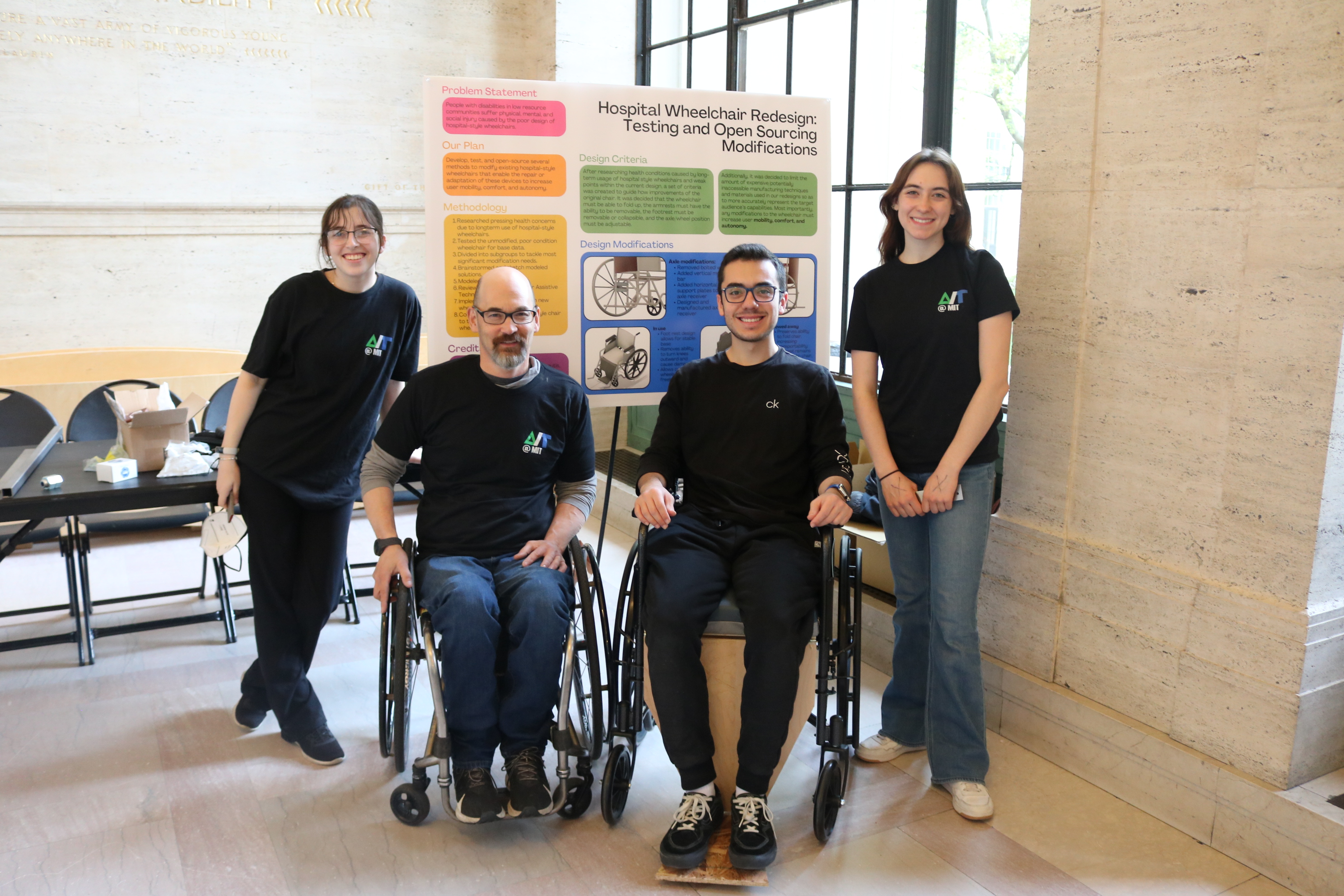Published
- 3 min read
Building a More Accessible World: Meet MIT Assistive Technology Club

Making technology work for everyone isn’t just an ideal—it’s our mission.
At MIT Assistive Technology Club (AT@MIT), we believe that the best solutions come from working directly with the people who need them most. We’re a community of students, engineers, designers, and co-designers united by a simple but powerful goal: making the world more accessible to everyone.
Our Philosophy: Co-Design at the Core
What makes our club unique is that we don’t design for people with disabilities—we design with them. Every project team includes dedicated co-designers from the MIT and greater Boston communities who guide the development process from start to finish. These aren’t consultants or test users; they’re integral team members whose lived experiences shape every decision we make.
This collaborative approach transforms what might be a typical engineering project into something far more meaningful. Our members don’t just gain technical skills—they learn to listen, iterate thoughtfully, and understand that the best technology emerges from genuine human connection.
What We Do
From autonomous feeding robots to blind assistance apps, our project teams tackle real challenges that directly impact our co-designers’ daily lives. Each semester, small teams of MIT students work alongside their co-designers to:
- Identify genuine needs and opportunities for assistive technology
- Brainstorm and prototype solutions within realistic constraints
- Iterate based on continuous feedback and testing
- Deliver functional devices that make a tangible difference
We provide our teams with funding, mentorship, and connections to the broader assistive technology community. Through weekly general body meetings, team sessions, and our end-of-semester showcase, members gain hands-on engineering experience while building lasting relationships.
Learning Through Making
We introduce students to assistive technology’s unique design space—one that’s both challenging and deeply rewarding. Our members learn to:
- Think proactively about accessibility and inclusive design
- Collaborate intentionally across different perspectives and abilities
- Iterate responsibly with real users whose needs drive the work
- Build connections within the AT community that extend beyond MIT
This isn’t about creating “production-level” products in a single semester—though we find many of our club members go above and beyond in open-sourcing or collaborating with external companies to bring their projects to the world. It’s more about understanding the design process, learning from failure, and discovering how engineering can serve human needs in profound, personal ways.
More Than a Club
AT@MIT is structured to support meaningful work. Our executive board ensures every member and co-designer feels included and supported. Team leads coordinate their groups and maintain thorough documentation. Co-designers guide the vision while understanding the realities of student bandwidth and semester timelines.
Most importantly, we’re building a community. Through social events, cross-team collaboration, and connections with MIT alumnae, professors, and the greater assistive technology field, we’re creating networks that will last well beyond any single project.
Our Hope
We hope that every student who joins AT@MIT leaves with more than technical skills. We want them to carry forward an understanding of inclusive design, a commitment to accessibility, and the confidence to pursue projects in the assistive technology space throughout their careers.
None of this work would be possible without the support of departments like the MIT Edgerton Center, MIT EECS, and MIT’s Department of Mechanical Engineering (MechE), and the enthusiasm of our co-designers who trust us with their ideas and experiences. Together, we’re proving that when engineers and community members collaborate as equals, technology becomes a powerful force for inclusion.
Want to learn more or get involved? Stay tuned for upcoming posts about our current projects, our design process, and the incredible people who make AT@MIT possible.
